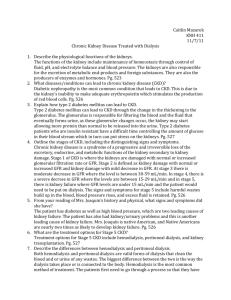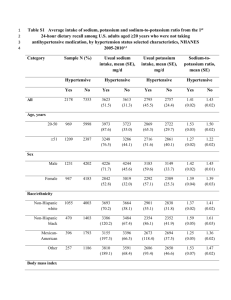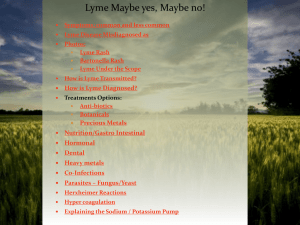Chronic Kidney Disease (CKD)
advertisement
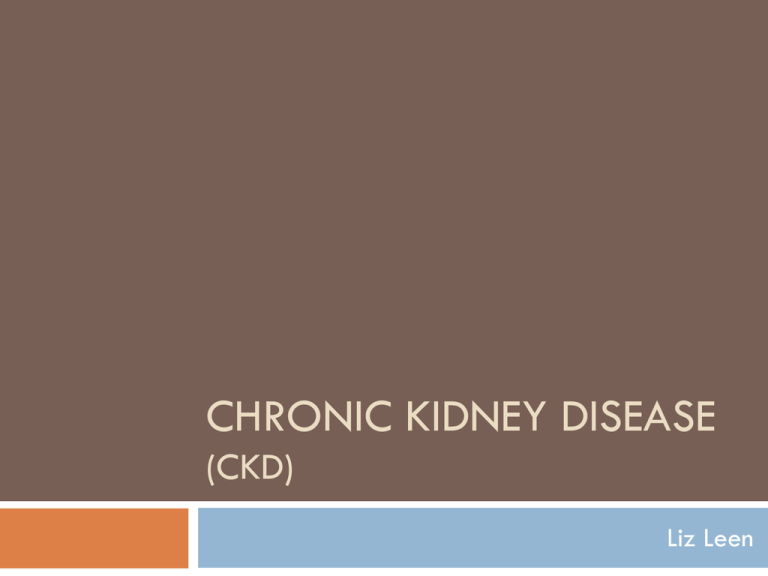
CHRONIC KIDNEY DISEASE (CKD) Liz Leen Patient Enez Joaquin 24 y/o Pima Indian Diagnosed with T2DM at age 13 Has not been compliant with prescribed treatment Progressive decompensation of kidney function over past 7 years Diagnosed with Stage 3 CKD 2 years ago Has developed acute symptoms over past 2 weeks GFR is 28 mL/min Symptoms Anorexia N/V 4 kg weight gain in past 2 weeks Edema In extremities, face, and eyes Shortness of breath Anuria Malaise Muscle cramping CKD Kidney damage or a decrease in kidney function that lasts over three month Kidney function measured by the glomerular filtration rate (GFR) A GFR less than 60 cc/min/1.73 m2 for more than 3 months indicates CKD 5 stages of disease; GFR indicates which stage a patient is in Diagnostic Measures Stage 1: GFR > 90 mL/min/1.73 m² Normal or elevated GFR Stage 2: GFR 60-89 (mild) Stage 3: GFR 30-59 (moderate) Stage 4: GFR 15-29 (severe) Stage 5: < 15 (kidney failure) Mrs. Joaquin’s GFR 28 mL/min Indicates stage 4 of CKD Kidney function is severely diminished Preparing and evaluating for kidney replacement therapy Etiology Most common causes of CKD are diabetes and high blood pressure Other causes: Autoimmune diseases Infection-related diseases Sclerotic diseases Urinary tract infections Cancer Diabetic Kidney Disease Changes in nephrons due to high levels of blood glucose from uncontrolled DM Starts with the thickening of glomeruli and ending in destruction High levels of sugar in blood can also damage blood vessels that bring oxygen and nutrients to kidneys Medical/Surgical Treatment Goal: treat underlying pathophysiology to delay progression of disease Progression of disease is highly individualized Dialysis Hemodialysis – blood is filtered outside the body, cleaned, and then returned to the body Medical/Surgical Treatment Dialysis Peritoneal dialysis – peritoneal cavity is used and a dialysate in introduced through a peritoneal catheter Can be performed in any clean, well-lit location Offers more freedom and flexibility for patient Medical/Surgical Treatment Kidney Transplant Matches must be immunologically compatible After transplant patients put on immunosuppressives Corticosteroids Cyclosporine Tacrolimus Mycophenolate Sirolimus mofetil Medical Nutrition Treatment Nutrition Therapy: 35 kcal/kg 1.2 g protein/kg Protein restriction help preserve kidney function Protein losses during dialysis 2 g potassium 1 g phosphorus 2 g sodium 1,000 mL fluid + urine output Mrs. Joaquin’s energy needs BMI based on edema-free adjusted body weight of 140 (63.6 kg) lbs is 27 Energy needs: 2,226 kcal/day Protein requirement: 76.32 g/day Should obtain 50% of protein from sources that have high biological value Nutrition Assessment Self-reported usual diet high in potassium, phosphorus, sodium, and energy Recent anorexia, nausea, and vomiting has lead to a decrease intake Elevated serum phosphorus, potassium, creatinine, and low GFR Stage 4 CKD Nutrition Diagnosis PES statements Altered nutrition-related laboratory values including elevated serum potassium as related to dietary choices high in potassium as evidenced by serum potassium of 5.8 mEq/L and self-reported potassium intake of 4.3g Excessive sodium intake as related to fluid retention and usual intake of foods high in sodium as evidenced by reported intake of 3.3 g of sodium Nutrition Intervention Goal 1 Lower serum potassium to normal range Limit dietary potassium to 2 g/day Educate on implications on health if excess potassium is consumed Educate on foods both high and low in potassium Create a sample meal plan to help keep dietary goals Track potassium dietary intake Nutrition Intervention Goal 2 Reduce fluid retention gains to acceptable range per dialysis treatment Limit dietary sodium to 2 g/day Educate on implications on health of consuming excess sodium and fluid intake Educate on foods both high and low in sodium and in fluids Create a sample meal plan to help keep dietary goals Track sodium dietary intake Tips to Help Control Fluid Intake Limit high-salt foods Drink from small glasses and cups Use sour candy or sugar –free gum to moisten mouth Add lemon juice to water or ice Freeze grapes and eat throughout the day Counts as a serving of fruit too!!! Swish very cold water or low alcohol mouthwash in mouth Don’t swallow Nutrition Monitor/Evaluation Monitor self-reported adherence to dietary requirements Monitor self-monitoring ability Recording Monitor mineral intake Include foods and beverages potassium and sodium Monitor oral fluid intake Monitor electrolyte and renal profile Include potassium and sodium Prognosis There is no cure for chronic kidney disease Untreated, it usually worsens to end-stage renal disease Lifelong treatment may control the symptoms of CKD
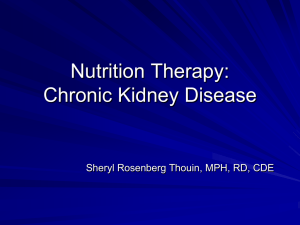

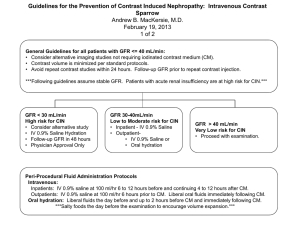
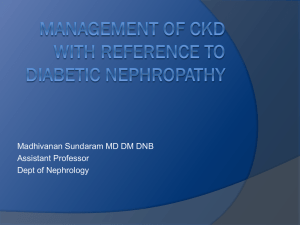
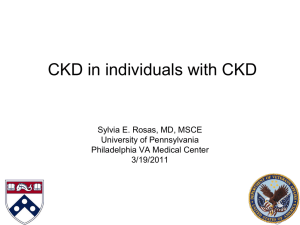
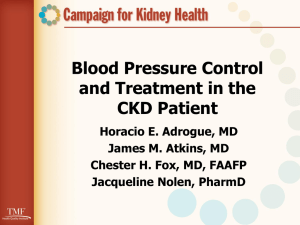
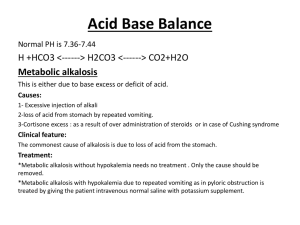


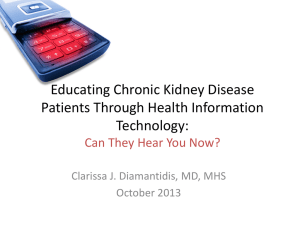
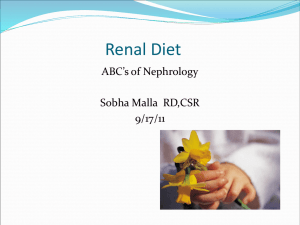
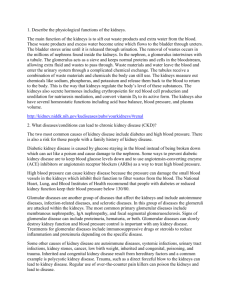
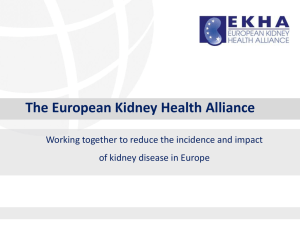
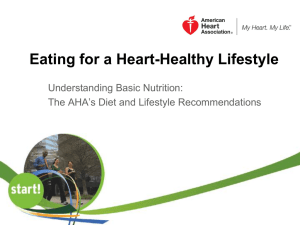
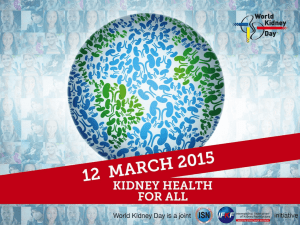
![Risk Adjustment Factor [RAF]](http://s2.studylib.net/store/data/005748329_1-97f04b2983127ae4930cafa389444167-300x300.png)
